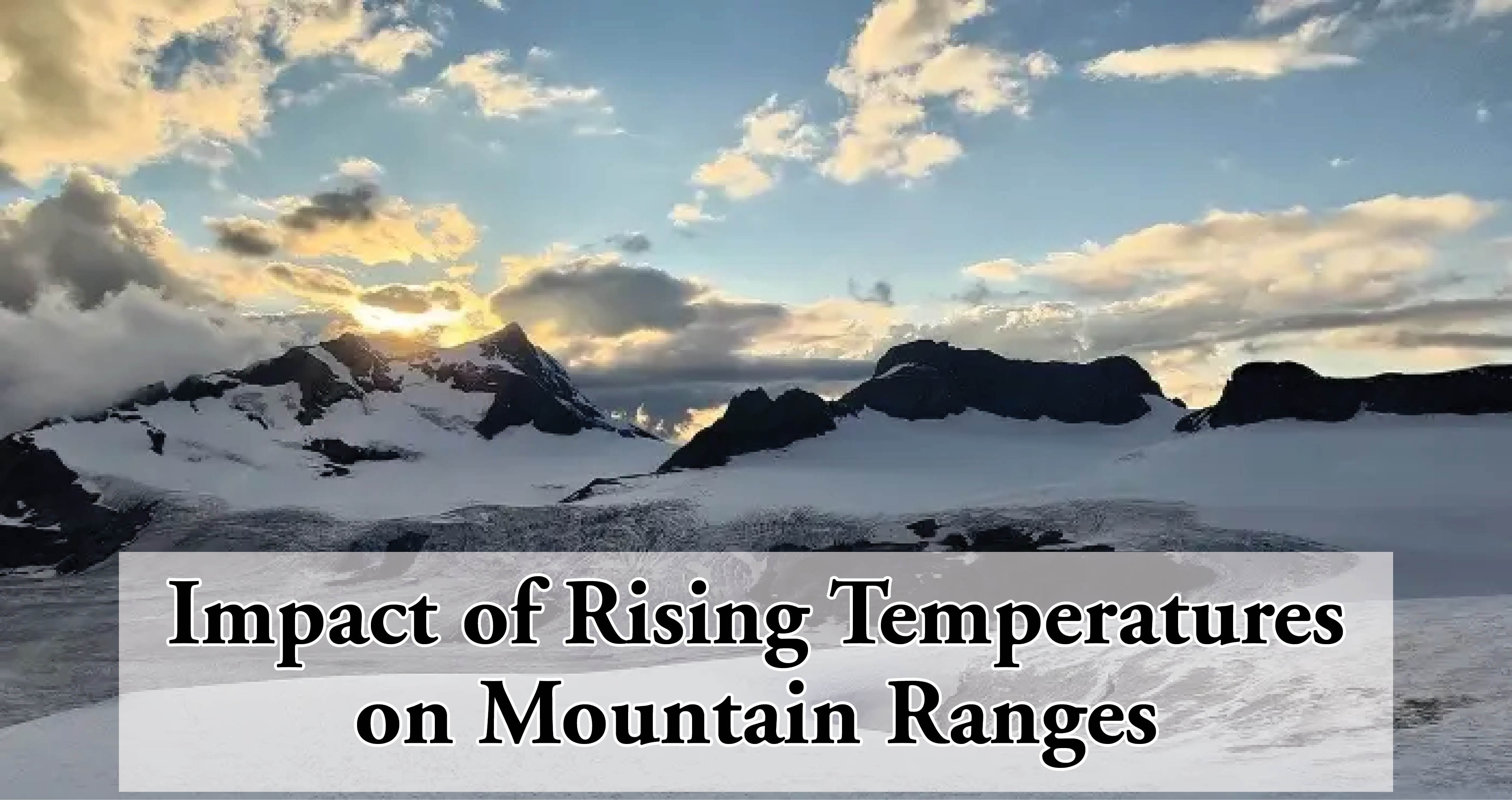Introduction
Mountain ecosystems are among the most sensitive to climate change, acting as critical indicators of global warming. These towering landscapes serve as natural water towers, providing freshwater to nearly two billion people worldwide. However, their stability is increasingly threatened by rising temperatures, leading to rapid and largely irreversible transformations. The United Nations World Water Development Report 2025 – Mountains and Glaciers: Water Towers, released by UNESCO on March 21, 2025, shed light on these alarming trends. Marking the first-ever World Day for Glaciers, the report presents compelling scientific evidence on the widespread impacts of climate change on mountain environments, particularly in terms of glacier melting, permafrost thawing, and shifting snowfall patterns.
- Glaciers, which have long been considered a reliable source of freshwater, are now retreating at unprecedented rates. The past three years alone have recorded the highest levels of glacial mass loss in history. Similarly, permafrost—frozen ground that underpins many high-altitude regions—is thawing rapidly, releasing vast amounts of carbon into the atmosphere and increasing the risk of landslides and infrastructure instability. Snow cover, a crucial factor in maintaining mountain hydrology, is also diminishing, with snowfall patterns becoming increasingly erratic.
- The consequences of these transformations extend far beyond the mountains themselves. Changes in freshwater availability threaten agriculture, hydropower generation, and drinking water supplies for millions living downstream. Additionally, glacial lake outburst floods (GLOFs) pose severe risks to communities, infrastructure, and livelihoods. With glaciers contributing significantly to global sea-level rise, the urgency to address these environmental changes has never been greater.
Key Observations by the Report:
Accelerated Glacier Melting
- Glaciers are disappearing at an unprecedented rate, with the past three years witnessing the largest recorded loss of glacial mass. The World Glacier Monitoring Service (WGMS) reports that since 1975, glaciers (excluding the Greenland and Antarctic ice sheets) have lost over 9,000 billion tonnes of ice, equivalent to an ice block the size of Germany with a thickness of 25 meters.
- In 2024 alone, global glaciers lost 450 gigatons of mass, with the Scandinavian glaciers, the Norwegian archipelago of Svalbard, and North Asian glaciers experiencing the most significant annual loss on record.
- Beyond rising temperatures, other factors such as wildfires and dust storms contribute to accelerated melting. The deposition of black carbon and particulate matter on glacier surfaces reduces their reflectivity, increasing heat absorption and thereby intensifying the melting process.
Permafrost Thaw and Its Consequences
Permafrost, which refers to ground that remains frozen for at least two consecutive years, is rapidly thawing due to increasing temperatures. This thawing is significant because:
- Carbon Emissions: Mountain permafrost contains 4.5% of global soil organic carbon, which is released into the atmosphere upon thawing, further accelerating climate change.
- Geological Instability: Permafrost plays a crucial role in stabilizing rock slopes, glacial moraines, and debris-covered surfaces. Its thawing increases the risk of landslides, rockfalls, and erosion, posing serious hazards to mountain ecosystems and human settlements.
Decline in Snow Cover and Erratic Snowfall Patterns
The report highlights a significant decline in snow cover across almost all mountain regions, particularly during spring and summer. A study published in Nature (November 2024) found a 7.79% decline in persistent snow cover between 1979 and 2022.
Additionally, snowfall patterns are becoming more erratic. Due to atmospheric warming, the altitude at which precipitation transitions from rain to snow is shifting upward. Consequently:
- Lower elevations are experiencing a decrease in snow cover depth and duration.
- More precipitation is falling as rain instead of snow, leading to earlier snowmelt and reducing the overall snow-covered area.
Why This Matters: The Broader Implications
Water Security and Hydrological Changes
Mountains cover 33 million square kilometers of the Earth's surface and serve as critical water sources for nearly 2 billion people worldwide. The rapid melting of glaciers threatens the stability of these water supplies.
- Erratic Water Flows: With glacier shrinkage, the timing and volume of water flow from mountains are becoming unpredictable, leading to variability in freshwater availability for communities downstream.
- Increased Erosion and Sedimentation: The loss of glacier mass leads to increased erosion and sediment deposits in rivers, affecting water quality and availability for agriculture, drinking water, and hydroelectric power generation.
Glacial Lake Outburst Floods (GLOFs)
The melting of glaciers also raises the risk of glacial lake outburst floods (GLOFs)—sudden, catastrophic floods caused by the failure of natural glacial dams.
- GLOFs have resulted in over 12,000 deaths in the past 200 years and have caused widespread destruction of farmland, homes, infrastructure, and hydropower facilities.
- The increasing frequency of such disasters is forcing internal displacement and disrupting livelihoods in affected regions.
Rising Sea Levels
Melted glacial ice contributes 25-30% of the observed rise in global sea levels. Between 2006 and 2016, glaciers lost 335 billion tonnes of ice per year, leading to an annual sea level rise of nearly 1 mm.
- Even a 1 mm rise in sea level exposes up to 300,000 people to annual coastal flooding, underscoring the far-reaching consequences of glacier loss.
Conclusion:
- The UNESCO report serves as a critical warning about the long-term impact of climate change on mountain ecosystems. Rising temperatures are not just altering landscapes but also endangering global water security, increasing natural disasters, and contributing significantly to sea level rise.
- Addressing these challenges requires global policy interventions, enhanced monitoring, and resource mobilization to mitigate further damage. It is high time that we create awareness, change our policies, and mobilize resources to ensure effective climate action.
- The mountains are intricately linked to the environment and the future of billions of people. Immediate and sustained efforts are necessary to combat climate change and protect these crucial ecosystems from further degradation.
| Main Question: Permafrost acts as a crucial component in regulating global temperatures and stabilizing landscapes. Explain the consequences of rapid permafrost thawing in mountain regions and its implications for climate change. (250 words) |








